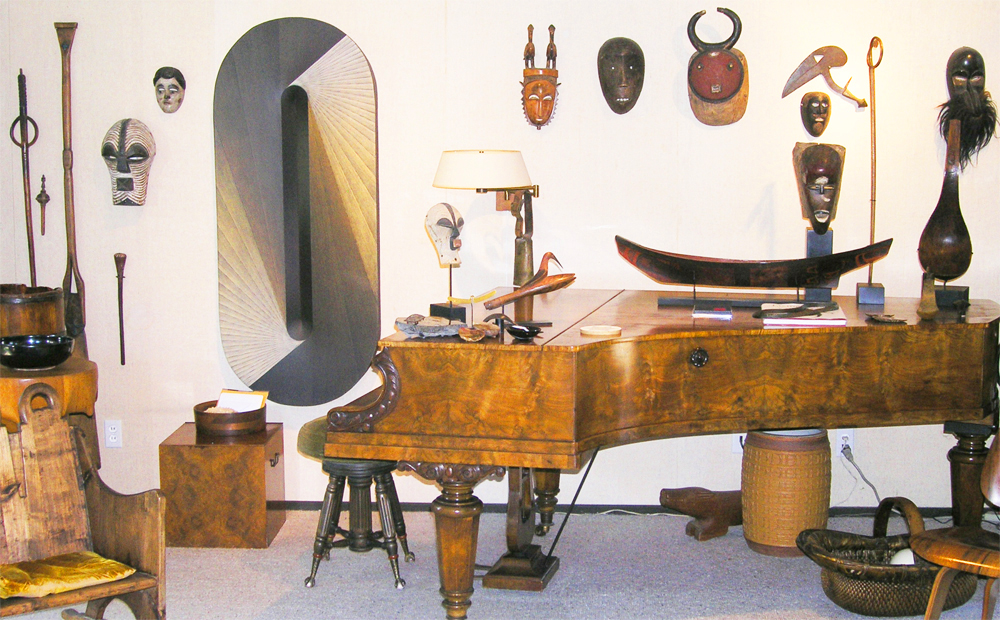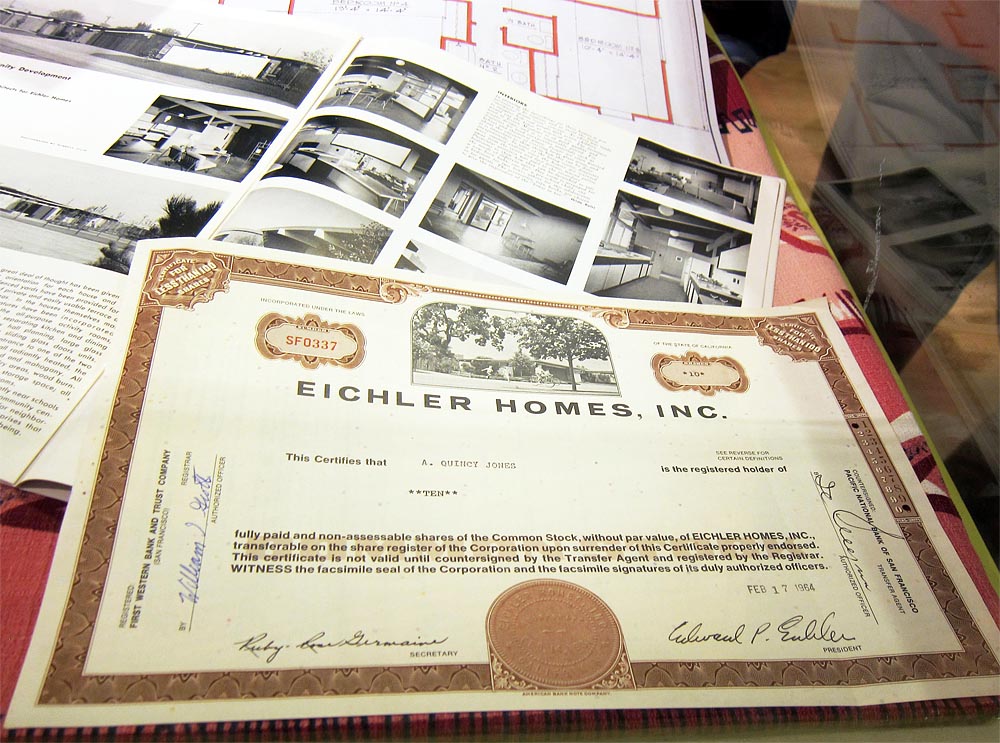Time for an Eichler Museum! - Page 2
 |
|
|
A reading room would be nice. There are books about Eichler homes, and many often beautifully illustrated historical reports and surveys that are worth perusing. There are also many books about mid-century modernism in general—and what would an Eichler library be without a full run of CA-Modern magazine issues?
Imagine, though, this Eichler museum as a lively institution serving locals and worldwide audiences alike.
The public could be drawn by the home's furnishings—classics of modern design, maybe with a focus on California designers—including desk sets by Kem Weber, ceramics by Gertrud and Otto Natzler, tapestries by Evelyn Ackerman.
Or traveling shows featuring Scandinavian designs of the '50s? Small shows by modern artists, including those who were associated with Eichler, such as artist/designer/instructor Matt Kahn of Stanford, and Joe's longtime promotional photographer Ernie Braun.
 |
|
|
The atrium and backyard too could be used for recreations of gardens by Robert Royston, whose firm did work on so many Eichler Homes' subdivisions and for individual Eichler homeowners. The atrium could house demonstration displays of California native plants, or of unusual plantings.
The museum too could investigate and publicize Joe and his team's role in society. Eichler worked to fight housing discrimination (and so did several people with whom he worked), and promoted social housing for workers and low-income people.
Issues surrounding fair housing continue to be important today, and the museum could contribute to discussions tied to current policy issues.
We wouldn't want an Eichler museum to be stuffy. With its airiness and openness to the outdoors, and its family-friendly design, there would be plenty of opportunity for the interactivity so many museums are seeking these days.
Imagine art classes for kids in the atrium, including clay play and other creative activities of the sort that were so often shown in Braun's photographs.
 |
|
|
Naturally, the Eichler museum would be part of an Eichler neighborhood, which raises the possibilities for enhancing its value.
Which neighborhood? Of course that depends on who wants an Eichler museum strongly enough to put in the considerable effort and cost it would take to create. Two that come to mind, because of their size, community spirit, iconic nature, and attractiveness are Greenmeadow in Palo Alto and Upper Lucas Valley in Marin.
But how about Fairglen in San Jose? Greenmeadow and Upper Lucas Valley already have pools and community centers run by neighborhood associations. Fairglen does not, though it does have what one resident has called “a crazy sense of community,” and, like Greenmeadow, is on the National Register.
An Eichler museum in a place like Fairglen could double as a small community center, offering a gathering spot for book clubs, meetings, and the like.
In the best of all worlds, for the historically and aesthetically minded, every Eichler neighborhood would have one original home preserved to museum standards. Not likely, right?
But surely, somewhere, there is an Eichler home awaiting stardom.




